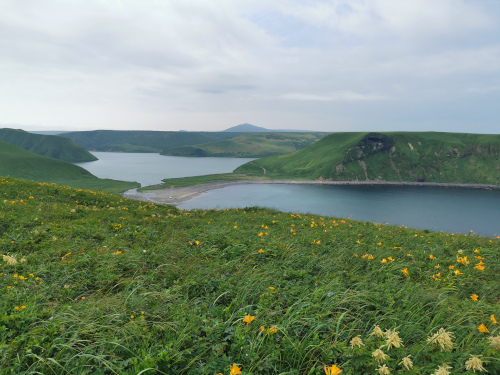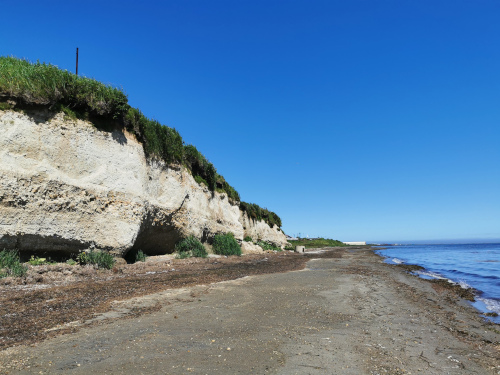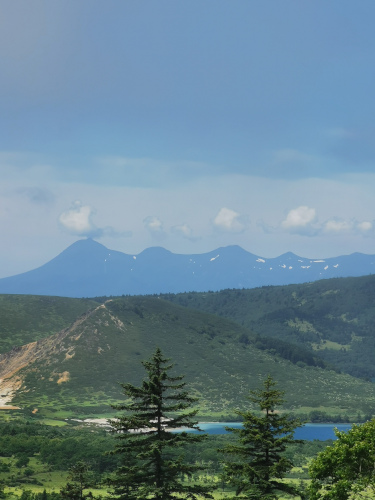|
The 57th Far Eastern Studies Seminar of the Department of Far Eastern Studies (IOM RAS) was held on Wednesday, 6 October 2021. Vasily V. Shchepkin (Senior Researcher, Department of Far Eastern Studies, IOM RAS) gave a lecture titled “A brief history of the Southern Kuril islands as told by local people in the summer of 2021” [Краткая история южных Курил, записанная со слов их жителей летом 2021 года]. This presentation was based on research funded by the Russian Foundation for Basic Research (RFBR) grant #20–09–00401. The presentation briefly summarized the results of the expedition to the Southern Kuril islands. The goal was to identify specific locations of historical Ainu toponyms, not used for a long time and by now forgotten, that were mentioned in Russian and Japanese documents of the late 18th and early 19th centuries. Since Japanese documents provide detailed descriptions for toponyms, it is possible to identify geographical features very accurately. This research project required fieldwork with direct observation of landscapes described in historical documents. V.V. Shchepkin’s expedition lasted for 3 weeks (July-August 2021).
In his presentation, V.V. Shchepkin briefly outlined the history of the Kuril islands. Northern islands close to Kamchatka were the first to become part of Russia. In 1778 Ainu inhabitants of the Southern Kuril islands and north-eastern part of Hokkaido also became Russian subjects (a monument in the town of Kurilsk commemorates this event). Since Russian authorities did not actively pursue further exploration of the Southern Kuril islands, the Japanese announced in 1799 that these lands were under their control. After the Russia-Japan treaties of 1855 and 1875 all the Kuril islands came under Japanese jurisdiction. During the period of Japanese control, almost no Ainu remained on the islands since they were moved to Hokkaido. In 1945 the islands became part of the USSR. Nowadays, although local people are greatly interested in exploring nature and history of the islands, they have a limited knowledge of the islands’ past. Nevertheless, V.V. Shchepkin was able to visit and identify many historical locations of Ainu settlements, including those in remote areas. The Ainu mostly lived in places with favourable climate (without Pacific mist), rich in fresh water and fish. The expedition also visited the remains of a Japanese castle in which V.M. Golovnin and his companions were held in 1811.
The presentation was accompanied by demonstration of numerous photo and video materials showing landscapes of the Southern Kuril islands, local plants and animals, as well as historical spots. New research materials presented by V.V. Shchepkin were highly appreciated by the audience (IOM RAS researchers and graduate students, representatives of other academic institutions, and students). After the presentation, various topics related to the history of the Kuril islands were discussed.
Y.V. Boltach
V.V. Shchepkin
(translation: A.Y. Lushchenko)
SEMINAR PHOTOS



Photos by N.V. Zakharova PRESENTATION PHOTOS Lava plateau Yankito near the town of Kurilsk (Iturup)
 Tornaya Bay and Sopochnoye Lake on Iturup island where an Ainu settlement was located.
 “White rocks” made of pumice and volcanic glass, one of the spectacular natural landmarks of the Iturup island.
 Olya Bay and Reidovo village (Iturup island), where an Ainu settlement was located.
 Atsonupuri volcano (Iturup) as seen from a boat.
 A rocky hill in Golovnino village (Kunashir) where the Japanese castle Tomari was located. Its garrison took captain V.M. Golovnin and his companions prisoner in 1811.
 Part of the caldera of the Golovnin volcano (Kunashir) with lakes Kipyasheye (“Boiling” on the right) and Goryacheye (“Hot” on the left).
 The caldera of the Golovnin volcano (Kunashir). Peaks of the Shiretoko peninsula (Hokkaido, Japan) are seen in the distance.
 A part of a fumarole field of the Mendeleyev volcano (Kunashir).
 A view from the rock Sobachya Golova (“Dog’s head”) on which an Ainu castle (chasi) was built. One can see Lagunnoye Lake and Pervukhin Bay between which the settlement Shibutyari (Kunashir) was located.

Photos by V.V. Shchepkin |

